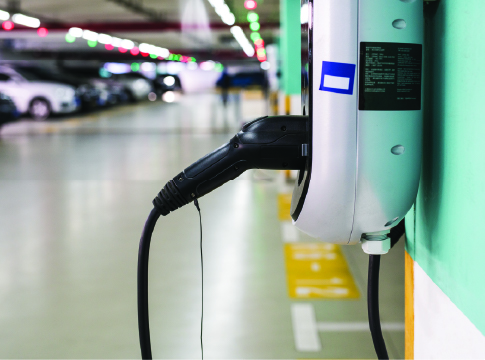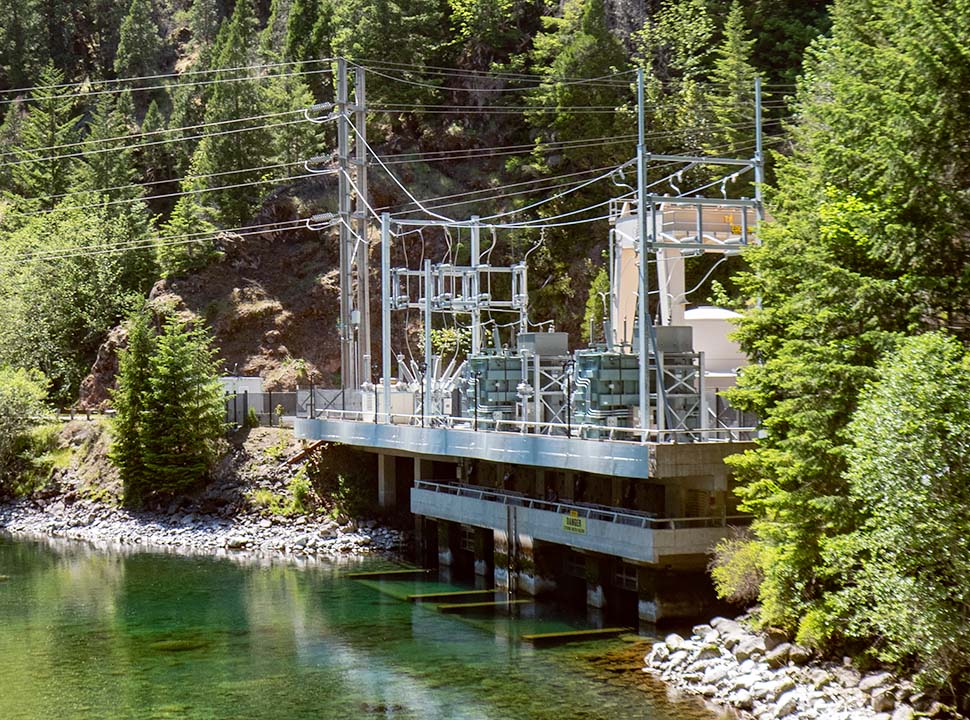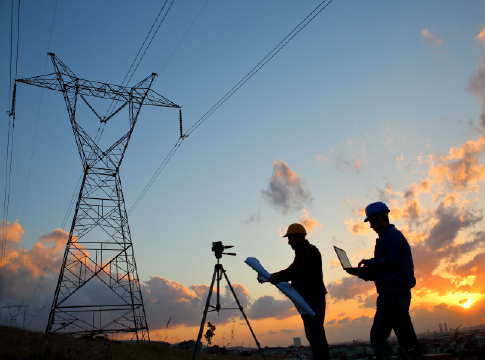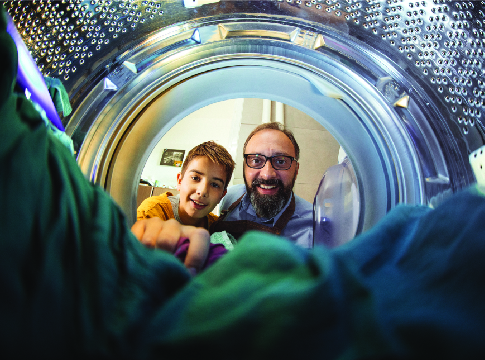Related News
Related News
-
Energy shortfall of 9 gigawatts projected for the Northwest
By 2030, a dry year combined with soaring energy demand during extended cold snaps could lead to rolling blackouts, a new study warns.
Find Out More -
Sustainability Snapshot - Celebrating Energy Efficiency Projects in the Community
Sustainability Snapshops highlight impactful projects completed by EWEB's Customer Solutions department, as a way to celebrate the meaningful work happening behind the scenes.
Find Out More -
EWEB secures $2.5 billion of reliable, affordable, carbon-free energy for customers
The new contract with EWEB’s largest energy supplier, the Bonneville Power Administration, forms the foundation of a diverse energy portfolio.
Find Out More -
Women in STEM: Meet the Hydro Project Engineer Building Habitat for Salmon
EWEB Engineer Associate Val Chang found her way to the McKenzie River from Los Angeles, inspired by heritage trips to the waters of Taiwan and key mentors along the way.
Find Out More -
Public Power Week Poster Contest Winners 2025
The results are in! View the winning posters from EWEB's 2025 Public Power Week Poster Contest.
Find Out More -
EWEB Hometown Heroes compete internationally
Out of 290 teams from 14 different countries, EWEB's Lineman Rodeo team places in the top third of competitors.
Find Out More -
Vote for your favorite Public Power Week Posters
The top five submittals will receive awards. Help us pick the winners.
Find Out More -
Electric Projects underway in North & South Eugene
Underground lines and disaster-resilient power poles are part of EWEB’s infrastructure upgrade near Eugene’s largest natural resource area.
Find Out More -
The Bonneville Power Administration Rate Change and Your EWEB Bill
BPA’s finalized rate increase is smaller than projected, and EWEB’s pass-through adjustment effective October 1, 2025 will now be 2.7% for residential customers—down from the anticipated 4%.
Find Out More -
EWEB completes helicopter installation of salmon habitat features
EWEB adds downed trees and 2,000 tons of gravel to the Uupper McKenzie River below Tamolitch Falls to improve spawning habitat.
Find Out More -
Court rules in favor of EWEB in Carmen-Smith litigation
The U.S. District Court in Eugene has granted EWEB's motion to dismiss a lawsuit brought under the Endangered Species Act pertaining to fish passage at EWEB’s Trail Bridge Dam. The favorable ruling clears the way for EWEB to continue advancing towards implementation of permanent fish passage at the dam.
Find Out More -
EWEB proposes modified plan for permanent fish passage at Trail Bridge Dam
After eight months of extensive collaboration and analysis with scientific experts at two federal regulatory agencies, EWEB is proposing an improved plan to build permanent fish passage facilities at Trail Bridge Dam on the McKenzie River.
Find Out More -
Sustainability Snapshot - Ideal Steel July 2025
Our second Sustainability Snapshop highlights a project where EWEB helped a local industrial warehouse upgrade over 1,000 flourescent lights to new efficient LEDs.
Find Out More -
EWEB prepares for wildfire season with risk mitigation measures
EWEB is building a more resilient electric system to weather various types of disasters, from wildfire to winter storms.
Find Out More -
EWEB, Lane County host open house to gather feedback for “Leaburg Transportation Alternatives Analysis”
“What is the Future of the Leaburg Dam Bridge?” open house exhibit on display at Lloyd Knox Park Visitor Pavilion through July 25
Find Out More - Show More
EWEB seeks public input on electric vehicle, demand response standards
October 11, 2023 • Aaron Orlowski, EWEB Communications

EWEB is seeking public input on the potential adoption of updated standards for electric vehicles (EVs) and demand response programs.
Interested community members can comment online by visiting eweb.org/PURPA. The deadline for comment is Oct. 14.
The standards EWEB is weighing come from updates to the federal Public Utility Regulatory Policies Act (“PURPA”). The legislation does not require public utilities such as EWEB to adopt the standards, in whole or in part. Rather, the law requires EWEB to evaluate the standards and decide whether they are a good fit.
The potential standards encourage greater adoption of electric vehicles and implementation programs to shift when electricity is consumed. They broadly align with EWEB’s current policies and programs supporting the electrification of the transportation sector. And they align with EWEB’s goals of implementing demand response programs that incentivize customers to shift when they use energy – through smart thermostats, managed EV charging and other methods – to reduce strain on the grid and reduce carbon emissions.
“The standards proposed by PURPA form a strong foundation, but we will need to clarify and adjust them to align with our community’s values,” said Brian Booth, EWEB’s chief energy resource officer. “We broadly support reducing community carbon emissions by electrifying transportation with EWEB’s largely carbon-free electricity. And we support using demand response programs to reduce energy use at peak times, when it tends to cause the most emissions and be the most expensive.”
The proposed electric vehicle standards align with existing EWEB programs.
The potential standards state that utilities should promote transportation electrification by establishing rates that promote “affordable and equitable electric vehicle charging options for residential, commercial, and public sector electric vehicle charging infrastructure” while improving the customer experience by reducing charging times. They also state that utilities should accelerate third-party investment in EV charging and “appropriately recover the marginal costs” of delivering electricity to EVs.
EWEB currently has robust programs to promote transportation electrification, including a $500 rebate for Level 2 home EV chargers, a $300 electric bike rebate, EV car sharing stations, and electric mobility grants for community organizations and others. For businesses, EWEB offers up to $1,500 for public commercial Level 2 chargers, up to $2,000 for public multifamily Level 2 chargers and up to $15,000 for public commercial direct current fast chargers. The funds for these programs come from Oregon Clean Fuels Credits, not EWEB rates.
For EWEB, electric mobility extends beyond customers owning their own electric vehicles to include walking, biking, riding e-bikes, transit and electric car share programs. This diversity of options makes electric mobility more accessible and equitable.
As EWEB weighs the PURPA standards, it will have to navigate tradeoffs. Tension exists between increasing charging speeds and making charging affordable, since faster charging tends to be more expensive to deliver. In addition, tension also arises between recovering the marginal costs of delivering electricity to EVs and setting equitable rates.
“A key consideration in the proposed standards is how equity manifests. We’ll have to navigate tensions and tradeoffs between various priorities,” said Juan Serpa Muñoz, who manages EWEB’s electric mobility programs. “To guide us, we’ll keep ensuring that EWEB’s programs are designed to make electric transportation accessible – not merely available – to all customers, including those who can’t afford a personal vehicle.”
The proposed demand response standards match EWEB’s vision for future programs.
The potential standards state that utilities should “promote the potential use of demand response and demand flexibility practices by commercial, residential, and industrial consumers to reduce electricity consumption during periods of unusually high demand.” They also state that utilities “may establish rate mechanisms for the timely recovery of the costs of promoting demand-response and demand flexibility.”
Demand response programs arose as a potentially vital way to meet the community’s future electricity needs during EWEB’s analytical 2023 Integrated Resource Planning (IRP) process. EWEB’s IRP modeling software selected demand response as a cost-effective resource that can reduce the need to build or buy new power plants to provide electricity when demand is at its highest.
Before EWEB can fully adopt demand response programs, the utility will need to finish deploying advanced metering infrastructure, or “smart meters.” So far, EWEB has installed smart meters free of charge for about 70% of customers, though supply chain shortages of the last few years have delayed rollout. With inventory rising again, EWEB expects to begin replacing the remaining old meters with smart meters early next year.
“Technology improvements in smart thermostats, smart hot water heaters, smart EV chargers and other devices are making possible a world where customers play a key role in managing their energy use so it better lines up with when renewables such as wind and solar are abundant,” said Brian Booth, EWEB’s chief energy resource officer. “But to make this future a reality at EWEB, we need to finish rolling out smart meters and upgrading our back-end billing system, while implementing the right rate structures and pricing signals.”
The mid-August heat wave demonstrated the potential for demand response in the Eugene community. With temperatures cresting 100 degrees for four days straight, EWEB asked customers to cut back on energy usage to avoid straining the grid. Customers responded enthusiastically, trimming energy use by 10 to 15 megawatts – the equivalent of shutting off 10,000 to 15,000 window air conditioning units.
The community’s voluntary conservation – customers raised the temperature settings on their air conditioners, while delaying electric vehicle charging and the use of major appliances – shows that the community is ready for demand response programs that would encourage customers to shift when they use energy to better align with when energy is abundant and available.
The PURPA standards reflect federal energy goals.
The Public Utility Regulatory Policies Act (“PURPA”) was first passed in 1978 and was updated as part of the 2021 Infrastructure Investment and Jobs Act. It requires public utilities such as EWEB to consider the standards, but it does not require public utilities to adopt them.
PURPA was originally passed to promote energy conservation and the efficient use of resources, as well as to provide equitable rates to customers.
The new demand response standard reflects a subtle change in the purpose of PURPA. In the 1970s, electricity generators relied on fossil fuels. So conserving fuel – regardless of when it was burned – was the main concern.
Today, electricity generators are increasingly variable renewable resources, such as wind and solar. The “fuel” – the wind and the sun – is cheap and plentiful. But the challenge is aligning energy consumption with when that “fuel” is available. This is why the new standards focus on demand response programs, which shift when energy is consumed.
Related Programs
EWEB’s energy supply planning process examines possible energy resource portfolios with a goal of creating useful insights for long-term (20-year) electricity supply planning decisions.




